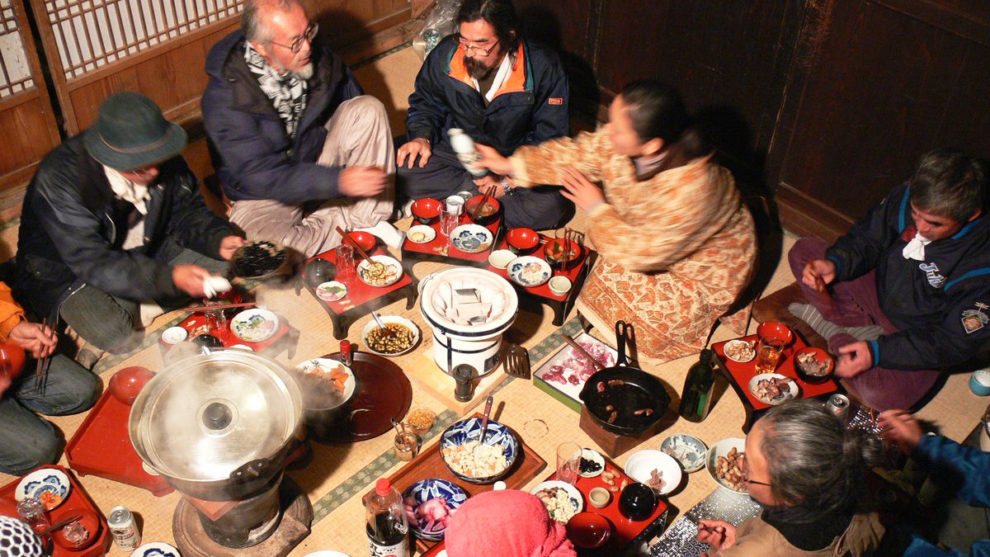The concept of urbanization is one that has been happening for over a century now, with the more remote areas all over the world essentially becoming uninhabited, as more and more people abandon the struggles associated with them for the “luxuries” of the cities. Shigeru Kobayashi, however, directs a documentary about the exact opposite, focusing on a group of people that abandoned the city to move to Niigata Prefecture, located in central Japan, which is known for its heavy snowfall.
Dryads in a Snow Valley is streaming as part of JFF+ Independent Cinema

In that fashion, the film revolves around three axes. The first one is to present both the people who moved from the city to the particular area, a number of which seem to have a technical background, as in the case of a dye-artist for example, and the ones who already lived there, the overwhelming majority of which are elderly. The second and third, which actually form a rather realistic antithesis, is the hardships living in such an area presents, particularly during the winter, when the snow falling is almost constant, and the joyment the inhabitants receive from an intense sense of community that has essentially deemed them a family. Consequently, the everyday life of those people is the element that surrounds all others.
For example, the fixing of roofs every summer, with the use of grass from the fields, is an integral part of life, as the snow weighs heavy (both literally and metaphorically) on them during the winter. The reconstruction of an abandoned house in the area, by one of the people who left the city to come there, highlights this phenomenon even better, as much as how difficult such endeavors are in such a harsh setting. The same applies to the work in the fields, in an aspect Kobayashi focuses intently on.
A large part of the documentary also deals with how the locals are entertained, with the performances of local theatre troupes, the singing in the night inside the houses, the telling of stories, and expectedly, the drinking, taking a large part of the film, highlighting that people there also have fun on occasion. Furthermore, the sense of community everyone feels, both as a preference and a necessity, is showcased as another integral part of living in this remote area.
The hardships, particularly during the winter, are rather intense, but Kobayashi shows the inhabitants time and time again to laugh their heart out, particularly because it is obvious that they actually want to be there. At the same time, and although some kind of romanticizing does exist (for example what happens when somebody gets seriously ill) Kobayashi's approach also shows that this type of life is essentially coming to an end, since when the elderly that live there now die, the area will most probably be deserted. This aspect, and the excellent song of the end, close the documentary in a pessimistic, but also realistic way.
Kobayashi has obviously gained the trust of his “subjects” as we see him following them quite closely, frequently inside their own homes, while their thoughts and feelings are eloquently portrayed on camera. DP Hirotaka Matsune captures both the hardships and the beauties of the area with artistry. Regarding Takeshi Hata's editing, the change between the seasons works quite well, but the repetition of an everyday life that is not exactly astonishing becomes a bit tiring after a fashion, and some trimming from the 99 minutes of the film's duration would definitely benefit it.
Despite the aforementioned issues, “Dryads in a Snow Valley” emerges as a well shot and quite significant documentary, particularly because it records a way of life that could well be extinct in the next few decades.
















